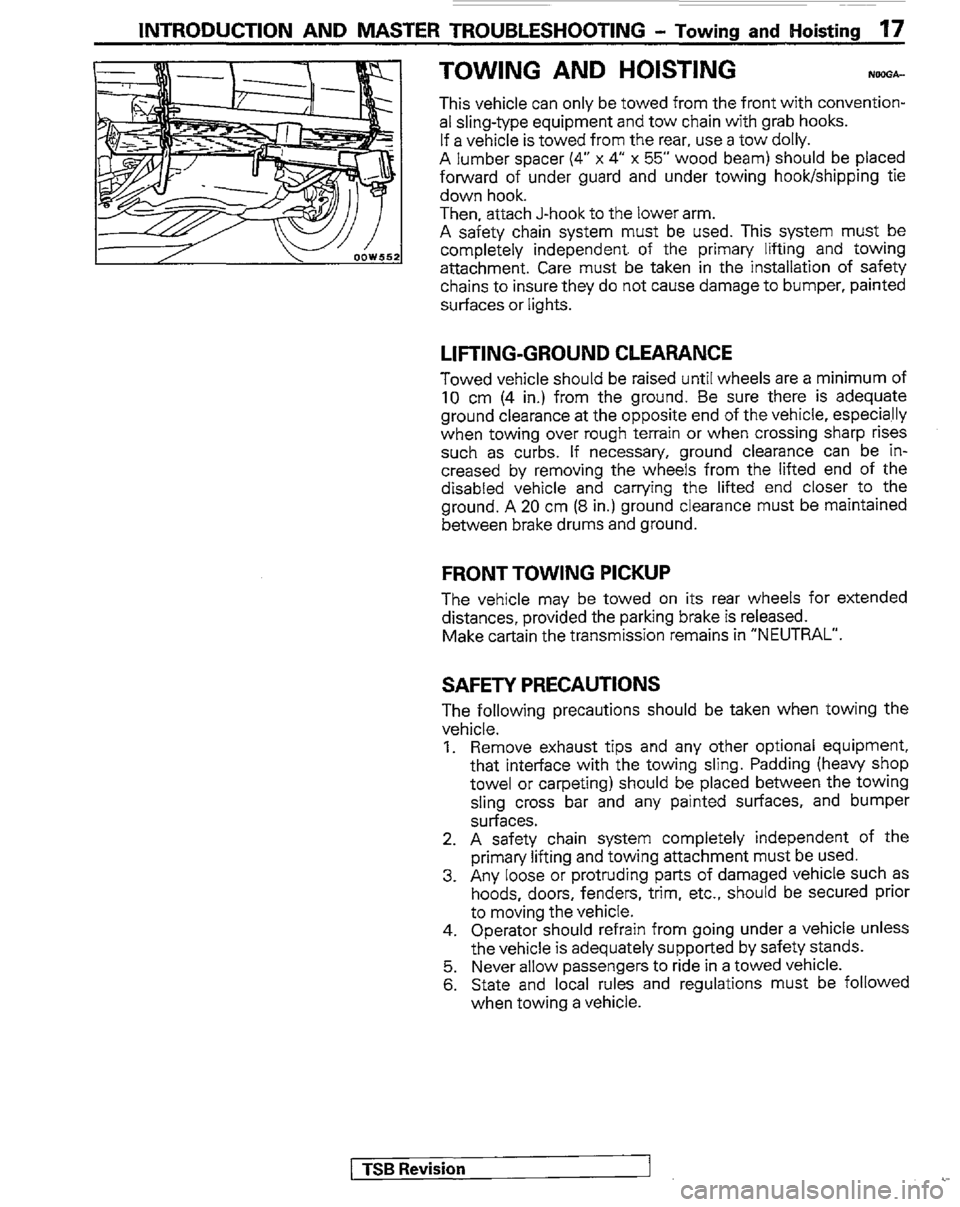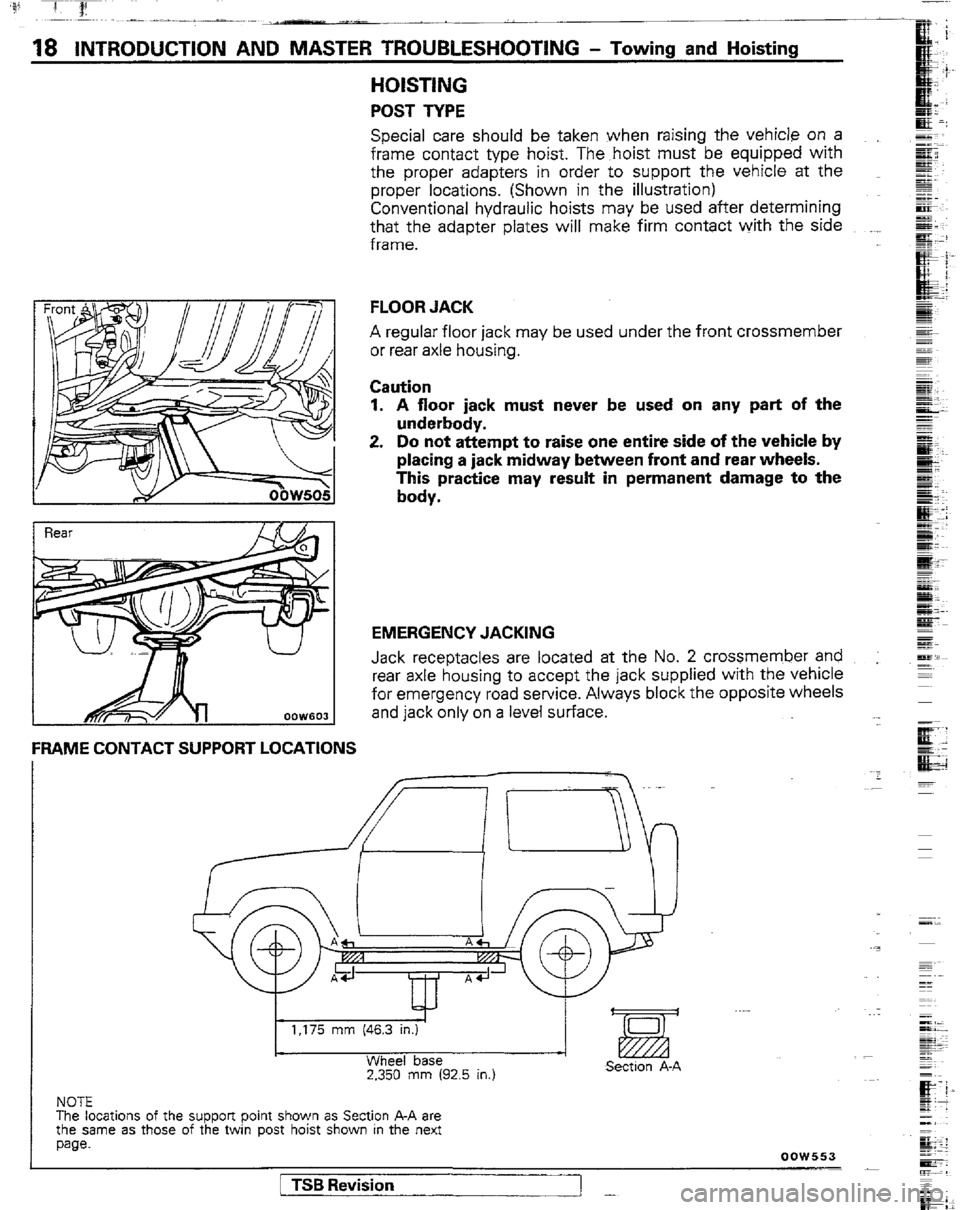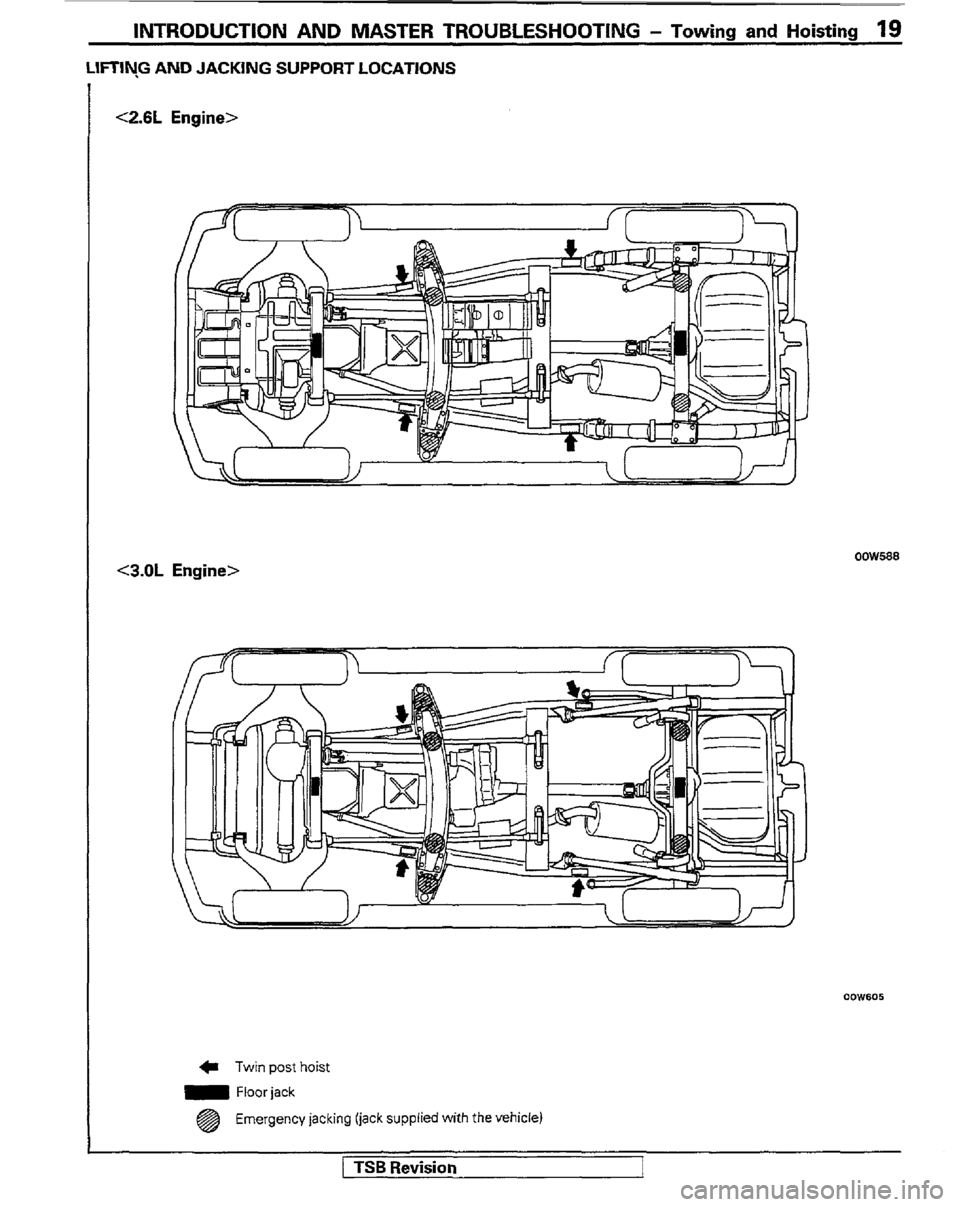tow MITSUBISHI MONTERO 1989 1.G Workshop Manual
[x] Cancel search | Manufacturer: MITSUBISHI, Model Year: 1989, Model line: MONTERO, Model: MITSUBISHI MONTERO 1989 1.GPages: 30, PDF Size: 1.61 MB
Page 17 of 30

INTRODUCTION AND MASTER TROUBLESHOOTING - Towing and Hoisting 17
TOWING AND HOISTING
This vehicle can only be towed from the front with convention-
al sling-type equipment and tow chain with grab hooks.
If a vehicle is towed from the rear, use a tow dolly.
A lumber spacer (4” x 4” x 55” wood beam) should be placed
forward of under guard and under towing hook/shipping tie
down hook.
Then, attach J-hook to the lower arm.
A safety chain system must be used. This system must be
completely independent. of the primary lifting and towing
attachment. Care must be taken in the installation of safety
chains to insure they do not cause damage to bumper, painted
surfaces or lights.
LIFTING-GROUND CLEARANCE
Towed vehicle should be raised until wheels are a minimum of
10 cm (4 in.) from the ground. Be sure there is adequate
ground clearance at the opposite end of the vehicle, especially
when towing over rough terrain or when crossing sharp rises
such as curbs. If necessary, ground clearance can be in-
creased by removing the wheels from the lifted end of the
disabled vehicle and carrying the lifted end closer to the
ground. A 20 cm (8 in.) ground clearance must be maintained
between brake drums and ground.
FRONT TOWING PICKUP
The vehicle may be towed on its rear wheels for extended
distances, provided the parking brake is released.
Make cartain the transmission remains in “NEUTRAL”.
SAFETY PRECAUTIONS
The following precautions should be taken when towing the
vehicle.
1. Remove exhaust tips and any other optional equipment,
that interface with the towing sling. Padding (heavy shop
towel or carpeting) should be placed between the towing
sling cross bar and any painted surfaces, and bumper
surfaces.
2. A safety chain system completely independent of the
primary lifting and towing attachment must be used.
3. Any loose or protruding parts of damaged vehicle such as
hoods, doors, fenders, trim, etc., should be secured prior
to moving the vehicle.
4. Operator should refrain from going under a vehicle unless
the vehicle is adequately supported by safety stands.
5.
Never allow passengers to ride in a towed vehicle.
6. State and local rules and regulations must be followed
when towing a vehicle.
1 TSB Revision
Page 18 of 30

.$i ~[ r
18 INTRODUCTION AND MASTER TROUBLESHOOTING - Towing and Hoisting
HOISTING
POST TYPE
Special care should be taken when raising the vehicle on a
frame contact type hoist. The hoist must be equipped with
the proper adapters in order to support the vehicle at the
proper locations. (Shown in the illustration)
Conventional hydraulic hoists may be used after determining
that the adapter plates will make firm contact with the side ._
frame.
FLOOR JACK
A regular floor jack may be used under the front crossmember
or rear axle housing.
Caution
1. A floor jack must never be used on any part of the
underbody.
2. Do not attempt to raise one entire side of the vehicle by
placing a jack midway between front and rear wheels.
This practice may result in permanent damage to the
body.
EMERGENCY JACKING
Jack receptacles are located at the No. 2 crossmember and .
rear axle housing to accept the jack supplied with the vehicle
for emergency road service. Always block the opposite wheels
and jack only on a level surface.
FRAME CONTACT SUPPORT LOCATIONS
1,175 mm (46.3 in.)
Wheel base
2.350 mm (92.5 in.) Sectlon A-A
NOTE
The
locations of the support point shown as Section A-A are
the same as those of the twin post hoist shown in the next
paw.
1 TSB Revision
I -
Page 19 of 30

INTRODUCTION AND MASTER TROUBLESHOOTING - Towing and Hoisting 19
LIFTIYG AND JACKING SUPPORT LOCATIONS
<2.6L Engine> <2.6L Engine>
<3.OL Engine> <3.OL Engine>
C Twin post hoist C Twin post hoist
m Floor jack m Floor jack
@ @ Emergency jacking (jack supplied with the vehicle) Emergency jacking (jack supplied with the vehicle)
TSB Revision TSB Revision